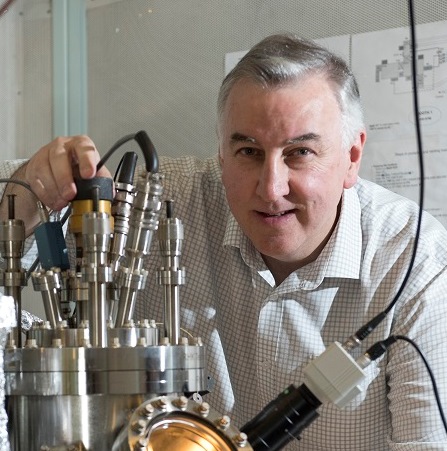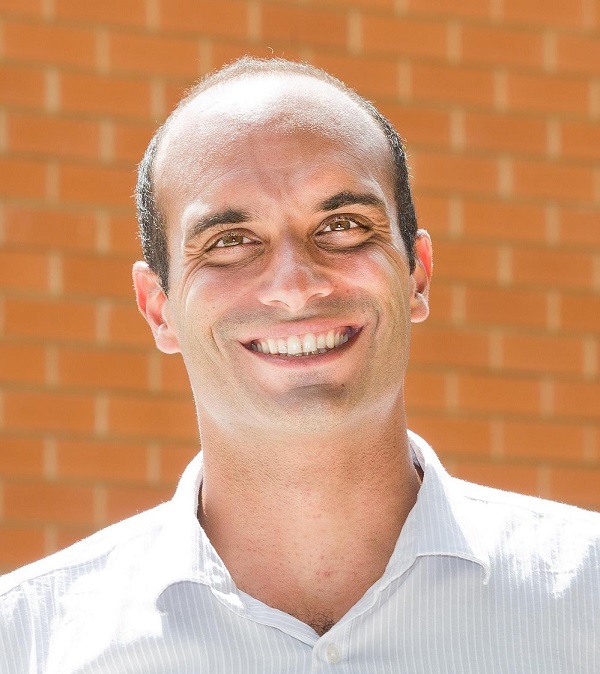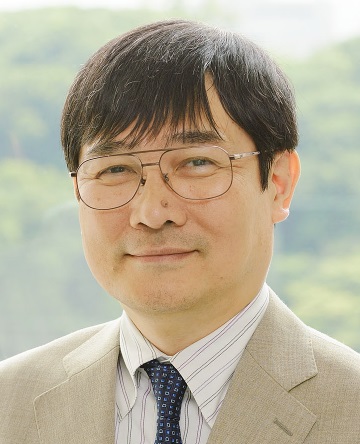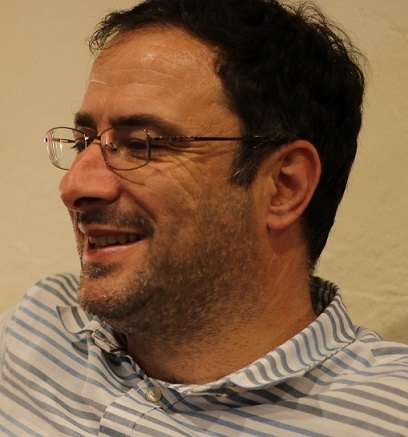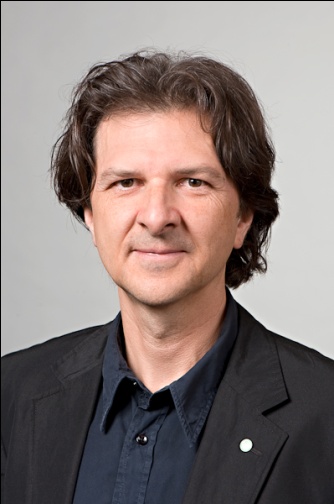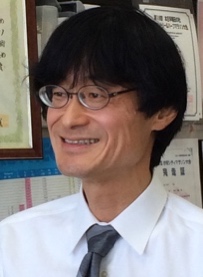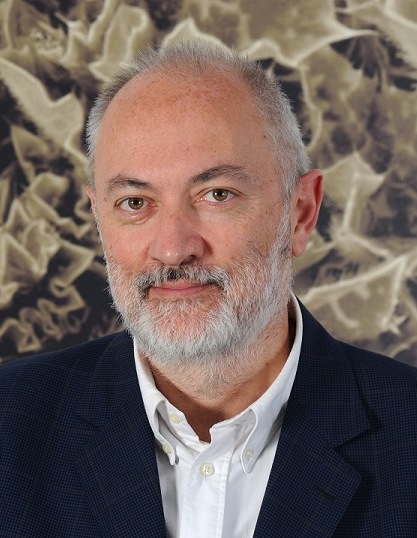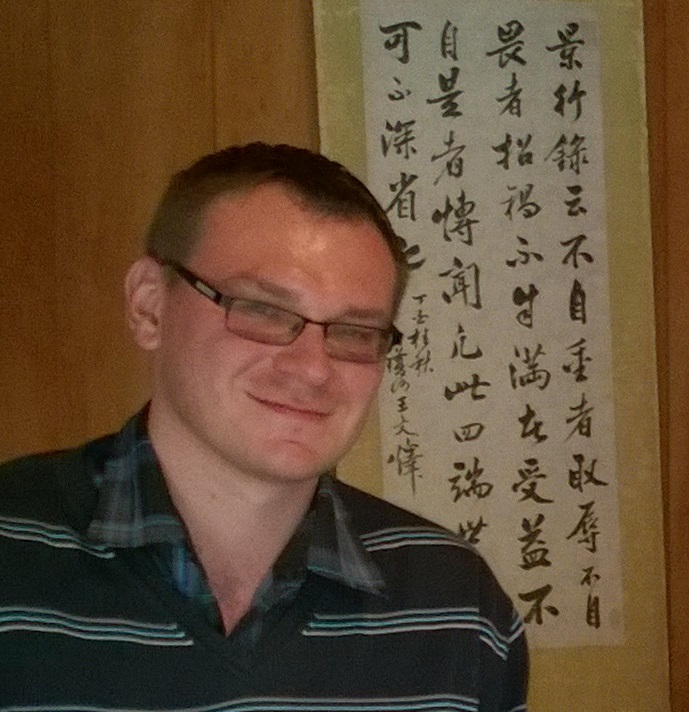Invited Speakers
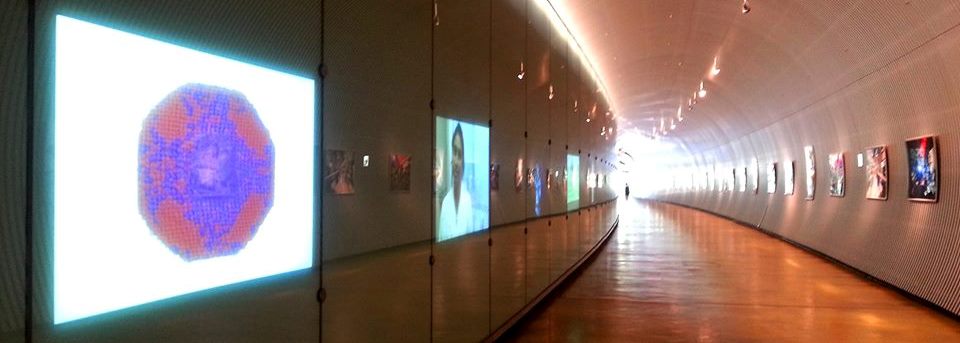
Atomic structure and mass-production of size-selected nanoparticles (clusters)
Size-selected nanoparticles (atomic clusters) have biomedical and catalysis applications and represent novel reference materials for nano-environmental work. In the 30 years since “magic numbers” were discovered in the mass spectra of atomic clusters, it has been common to see images of the atomic structures of these sub-5nm model nanostructures. However these images are generally archetypal structures or the results of computer modeling. Rarely have they emerged from direct experimental measurements. Nowadays the availability of aberration-corrected HAADF STEM is transforming our approach to this structure challenge [1,2]. I will address the atomic structures of size-selected Au clusters, deposited onto standard carbon TEM supports from a mass-selected source. Specific examples include the “magic number clusters” Au20, Au55, Au309, Au561, and Au923. The results expose (i) the size range in which the bulk fcc motif emerges, (ii) the metastability of frequently observed structures, (iii) the nature of equilibrium amongst competing isomers, including key parameters of the PES, (iv) the cluster surface and core melting points versus size and (v) the temperature the clusters reach under the e-beam; (iv) and (v) come from in situ heating stage measurements. The Cluster Beam Deposition (CBD) approach is applicable to more complex nanoparticles too, e.g. oxides and sulphides, while the STEM can also be applied to chemically synthesized colloidal nanoparticles [3,4].
A second major challenge in cluster science is to translate the beautiful physics and chemistry of clusters into applications, notably catalysis [5] and reference standards [6]. Compared with the (powerful) colloidal route, the nanocluster beam approach involves no ligands, particles can be size selected by the mass filter, and clusters containing challenging combinations of metals can be made. Until now the cluster approach has been held back by the very low rates of nanoparticle production, of order 1 microgram or per hour. This is sufficient for surface science studies but far below what is desirable even for industrial research-level studies. In an effort to address this scale-up challenge, I will discuss the development of a new kind of cluster beam source, the “Matrix Assembly Cluster Source” (MACS). Results obtained [5,7,8,9] suggest that cluster beam yields of grams per hour may ultimately be feasible; 10 mg scale has been demonstrated. Some practical catalysis results will be presented. An abundant flux of clusters demands new methods of cluster storage; I will discuss the functionalization and dissolution of the deposited clusters to create colloids [9] and a multilayer deposition approach which releases small platelets of supported clusters [10].
[1] Z.Y. Li et al, Nature 451 46 (2008).
[2] Z.W. Wang and R.E. Palmer, Phys. Rev. Lett. 108 245502 (2012).
[3] J. Liu et al, Ultramicroscopy (online 22 Nov 2016).
[4] N. Jian and R.E. Palmer, J. Phys. Chem. C 119 11114 (2015).
[5] P.R. Ellis et al, Faraday Discussions 188 39 (2016).
[6] R.C. Merrifield, Z.W. Wang, R.E. Palmer and J.R. Lead, Environ. Sci. Technol. 47 12426 (2013).
[7] ] R.E. Palmer, L. Cao and F. Yin, Rev. Sci. Instrum. 87 046103 (2016).
[8] V.T.A. Oiko, T. Mathieu, L. Cao, J. Liu and R.E. Palmer, J. Chem. Phys. 145 166101 (2016).
[9] N. Jian, K. Bauer and R.E. Palmer, Nanotechnology, in press (2017)
[10] R. Cai, N. Jian, S. Murphy, K. Bauer and R.E. Palmer, APL Materials 5 053405 (2017).
Prof Antonio Tricoli
Nanotechnology Research Laboratory
Research School of Engineering
Australian National University
Australia
Nanoarchitectonics of ultraporous nanoparticle networks for wearable optoelectronic devices and chemical sensors
Nanostructured materials have the potential to significantly enhance the performance of electronic devices as recently demonstrated for chemical sensors, batteries, and photodetectors. This has resulted in a gold rush toward novel applications ranging from flexible electronics to wearable nanogenerators. Despite these achievements, integration of nanomaterials in devices is challenging, and their assembly in suboptimal structures, lacking of hierarchical design, drastically limit the final performance. Here, we will present the fabrication of highly performing optoelectronic devices and chemical sensors by the multi-scale engineering of ultraporous nanoparticle networks. We will showcase the use of scalable and low cost synthesis approaches for the wafer-level fabrication of tailored and well-reproducible 3D morphologies of multi-functional nanoclusters. The fundamental mechanisms controlling the gas-phase self-assembly of these nanostructures will be shortly reviewed with respect to current limitations and future opportunities. We will conclude with a discussion of the commercial potential of these nanocluster-devices along the example of non-invasive medical diagnostics and wearable photodetectors.
Prof Atsushi Nakajima
Department of Chemistry
Faculty of Science and Technology
Keio Institute of Pure and Applied Science (KiPAS)
Keio University
Japan
Superatom chemistry of caged silicon and aluminum binary nanoclusters
One of the challenges in cluster science is to develop the novel research field of solid-state chemistry and material science using gas-phase-synthesized superatomic nanoclusters. Among various superatoms, the greatest advantage of the central-atom-encapsulating binary superatoms, such as M@Si16 and X@Al12, is that their electronic structures can be designed by optimizing the central atom while retaining the geometrical symmetry of the cage. The series of the caged binary nanoclusters have been focused on as superatomic building blocks for cluster-assembled materials with tailored functionalities, because the physical and chemical properties of M@Si16 [1] and X@Al12 [2,3] are controllable depending on the type of central atom and charge state. However, a major difficulty is that the gas-phase synthesized nanoclusters usually lose their pristine properties and functionalities on solid surfaces owing to the undesirable modification of their geometry and charge state. In order to utilize the superatomic nanoclusters in a naked form for assembly into functional devices, they need to be deposited and immobilized onto a solid-state substrate. To perform the size selective isolation of the naked nanoclusters, magic numbered “ion” formation in the gas phase is a versatile and powerful tool to couple with mass spectrometry [4,5].
In this presentation, we have systematically investigated the surface immobilization of the M@Si16 cations and anions. Initial products prepared via the surface immobilization of M@Si16 nanocluster ions on solid surfaces terminated with monolayer films of C60 molecules were investigated using scanning tunneling microscopy (STM) [6,7]. The STM results indicated that marked aggregation and desorption of surface-immobilized M@Si16 nanoclusters was not induced, even after thermal annealing at ~500 K. The chemical states of M@Si16 nanoclusters deposited on a C60 film by means of X-ray photoelectron spectroscopy (XPS) and ultraviolet photoelectron spectroscopy (UPS). The XPS and UPS measurements after a heating treatment or oxygen exposure reveal the high thermal and chemical robustness of the M@Si16–C60 heterodimer [8,9]. The chemical robustness of M@Si16 and X@Al12 binary superatoms will enable us to construct novel devices utilizing their unique properties as superatoms. We expect these experimental findings to greatly contribute to a field of nanomaterial science based on superatom chemistry.
[1] K. Koyasu, M. Akutsu, M. Mitsui, and A. Nakajima, Selective Formation of MSi16 (M=Sc, Ti, and V), J. Am. Chem. Soc., 127, 4998 (2005).
[2] M. Akutsu, K. Koyasu, J. Atobe, N. Hosoya, K. Miyajima, M. Mitsui, and A. Nakajima, Experimental and Theoretical characterization of aluminum-based binary superatoms of Al12X and their cluster salts, J. Phys. Chem. A, 110, 12073 (2006).
[3] M. Akutsu, K. Koyasu, J. Atobe, K. Miyajima, M. Mitsui, H. Tsunoyama, and A. Nakajima, Geometric and Electronic Properties of Si-atom Doped Al Clusters: Robustness of Binary Superatoms Against Charging, submitted, (2017).
[4] H. Tsunoyama, C. H. Zhang, H. Akatsuka, H. Sekiya, T. Nagase, and A. Nakajima, Development of High Flux Ion Source for Size-Selected Nanocluster Ions Based on High Power Impulse Magnetron Sputtering, Chem. Lett., 42, 857 (2013).
[5] C. H. Zhang, H. Tsunoyama, H. Akatsuka, H. Sekiya, T. Nagase, and A. Nakajima, Advanced Nanocluster Ion Source Based on High-Power Impulse Magnetron Sputtering and Time-resolved Measurements of Nanocluster Formation, J. Phys. Chem. A, 117, 10211 (2013).
[6] M. Nakaya, T. Iwasa, H. Tsunoyama, T. Eguchi, and A. Nakajima, Formation of Superatom Monolayer Using Gas-Phase-Synthesized Ta@Si16 Nanocluster Ions, Nanoscale, 6, 14702 (2014).
[7] M. Nakaya, T. Iwasa, H. Tsunoyama, T. Eguchi, and A. Nakajima, Heterodimerization via the Covalent Bonding of Ta@Si16 Nanoclusters and C60 Molecules, J. Phys. Chem. C, 119, 10962 (2015).
[8] M. Shibuta, T. Ohta, M. Nakaya, H. Tsunoyama, T. Eguchi, and A. Nakajima, Chemical Characterization of an Alkali-Like Superatom Consisting of a Ta-Encapsulating Si16 Cage, J. Am. Chem. Soc., 137, 14015 (2015).
[9] T. Ohta, M. Shibuta, H. Tsunoyama, T. Eguchi, and A. Nakajima, Charge Transfer Complexation of Ta-Encapsulating Ta@Si16 Superatom with C60, J. Phys. Chem. C, 120, 15265 (2016).
Prof Mukhles Sowwan
Nanoparticles by Design Unit
Okinawa Institute of Science & Technology Graduate University (OIST)
Japan
Design and fabrication of energy storage devices using cluster beam deposition
Cluster Beam Deposition (CBD) is a physical vapor deposition method, where nanoparticles are formed in the gas phase and then directly deposited in the soft landing regime on a desired substrate or device. This is an ultra high vacuum compatible method that can be easily integrated with multiple sources and different deposition techniques. The former enables the growth of multifunctional monodisperse nanoparticles and the latter allows the design and production of functional systems and devices containing the nanoparticle. In this talk I will address the utilization of CBD to design and build novel energy storage devices [1-3].
[1] Kumar S, Pavloudis T,Singh V, Nguyen H, Steinhauer S, Pursell C, Clemens B, Kioseoglou J, Grammatikopoulos P, Sowwan M. Hydrogen Flux through Size Selected Pd Nanoparticles into Underlying Mg Nanofilms. Advanced Energy Materials. 2017; DOI:10.1002/aenm.201701326.
[2] Kumar S, Singh V, Cassidy C, Pursell C, Nivargi C, Clemens B, Sowwan M. Hydrogenation of Mg Nanofilms Catalyzed by Size-Selected Pd Nanoparticles: Observation of Localized MgH 2 Nanodomains. Journal of Catalysis. 2016;337:14-25.
[3] Haro M, Singh V, Steinhauer S, Toulkeridou E, Grammatikopoulos P, Sowwan M. Nanoscale Heterogeneity of Multilayered Si Anodes with Embedded Nanoparticle Scaffolds for Li‐Ion Batteries. Advanced Science. 2017; DOI: 10.1002/advs. 201700180.
Highly selective, nanostructured sensors for breath analysis
Flame aerosol technology dominates the manufacture of nanostructured materials at tons/h, albeit rather simple ones (carbon blacks, fumed silica, alumina, titania etc.). Recent advances in combustion and aerosol science with multi-scale process design bring this technology to synthesis of far more sophisticated materials (e.g.nanosilver, subnanoclustered catalysts & biomedical ferrofluids) and even devices1, such as portable gas sensors for breath analysis that are the focus of this presentation.
Taking advantage of the capacity of combustion for stable synthesis of metastable phases and solid solutions, flame aerosol deposition and in-situ annealing of gas sensor films is presented as it had led, first, to optimally-doped SnO2 for ethanol and CO sensing and, most notably to epsilon-WO3 for selective detection of acetone (a diabetes type-1 tracer in the breath) at the ppb level & 90% relative humidity (RH). In tandem with PTR-MS, such a portable breath sensor was used for online and offline testing of humans benchmarked with standard glucose tests (finger pricking) 2. This led to an industrial prototype for clinical testing3 while MoO3- and ZnO-based sensors are developed for kidney disease4 and cholesterol5 monitoring, respectively.
Emphasis now is placed in development of sensor arrays (E-nose) with focus on formaldehyde (FA) as it is a potential breath marker for lung cancer and a tracer for indoor air quality monitoring6. Typical FA concentrations are below 100 ppb posing a sensitivity and selectivity challenge. Here, I present a highly sensitive, selective and compact electronic nose (E-nose) for on-line quantification of FA in realistic gas mixtures. This E-nose consists of four nanostructured and highly porous Pt-, Si-, Pd- and Ti-doped SnO2 sensing films. The constituent sensors offer stable responses and detection of FA down to 5 ppb (signal-to-noise ratio > 30) at breath-realistic 90% RH. Each dopant induces different analyte selectivity enabling selective detection of FA in gas mixtures by multivariate linear regression. In simulated breath (FA with higher acetone, NH3 and ethanol concentrations), FA is detected with an average error ≤ 9 ppb overcoming selectivity issues of single sensors. This device can facilitate easy screening of lung cancer patients and monitoring of indoor FA concentrations. Furthermore the simultaneous flame deposition and film resistance monitoring is used to optimize the sensor assembly and performance7.
1. Aerosol-based Technologies in Nanoscale Manufacturing: from Functional Materials to Devices through Core Chemical Engineering, AIChE J., 56, 3028-3035 (2010).
2. M. Righettoni, A. Schmidt, A. Amman, S.E. Pratsinis, “Correlations between blood glucose & breath components from portable gas sensors and PTR-TOF-MS”, J. Breath Res., 7, 037110 (2013).
3. M. Righettoni, A. Ragnoni, A.T. Güntner, C. Loccioni, S.E. Pratsinis, T.H. Risby, "Monitoring breath markers under controlled conditions", J Breath Res., 9, 047101 (2015).
4. A.T. Güntner, M. Righettoni, S.E. Pratsinis, "Selective sensing of NH3 by Si-doped α-MoO3 for breath analysis", Sensors and Actuators B: Chemical, 223, 266–273 (2016).
5. A.T. Güntner, N. Pinau, D. Chie, F. Krumeich, S.E. Pratsinis, "Selective sensing of isoprene by Ti-doped ZnO for breath diagnostics", J. Mater. Chem. B, 4, 5358 - 5366 (2016).
6. A.T. Güntner, V. Koren, K. Chikkadi, M. Righettoni, S.E. Pratsinis, "E-nose sensing of low-ppb formaldehyde in gas mixtures at high relative humidity for breath screening of lung cancer?", ACS Sensors, 1, 528-535 (2016).
Catalysis and electrocatalysis by size and composition selected subnanometer clusters
Supported clusters made of a handful of atoms can be considered as models of the catalytic active site, and changes in the size and composition of the cluster by a single (ad)atom or of the support can often dramatically alter their activity and selectivity.1-2 This presentation focuses on the study of in their size and composition uniform subnanometer clusters and their assemblies in heterogeneous catalysis and electrocatalysis. The ligand-free clusters are synthesized in the gas phase and, after mass selection with atomic precision, deposited on oxide and carbon based supports. The first part of the lecture will focus on model catalysts interrogated under realistic reaction conditions of pressure and temperature using in situ X-ray scattering and X-ray absorption spectroscopy combined with the monitoring of the reaction products, illustrated on the example of propylene epoxidation with molecular oxygen on silver clusters3 and on the example of low-temperature oxidative dehydrogenation of cyclohexane on subnanometer Cu, Pd and CuPd clusters. 4 In the second part of the presentation, the performance of clusters water splitting o Pd nd Co clusters5,6 and Ag and other clusters in Li-Air batteries will be discussed.7,8
1. E. C Tyo and S. Vajda. Nat. Nanotech. 2015, 7, 577-588.
2. S. Vajda and M.G. White, ACS Catalysis 2015, 5, 7152-7176.
3. Y. Lei, F. Mehmood, S. Lee, J. P. Greeley, B. Lee, S. Seifert, R. E. Winans, J. W. Elam, R. J. Meyer, P. C. Redfern, D. Teschner, R. Schlögl, M. J. Pellin, L. C. Curtiss, S. Vajda, Science, 2010, 328, 224-228.
4. A. Halder, B.Yang, M.J. Pellin, S. Seifert, S. Vajda, in preparation.
5. G. Kwon, E. C. Tyo, C. Yin, G. A. Ferguson, J. DeBartolo, S. Seifert, R E. Winans, A. J. Kropf, C. J. Heard, R. L. Johnston, J. P. Greeley, L. A. Curtiss, M. J. Pellin, and S. Vajda, ACS Nano 2013, 7, 5808-5817.
6. M. J. Pellin, S. C. Riha, E. C. Tyo, G. Kwon, J. A. Libera, J. W. Elam, S. Seifert, S. Lee, and S. Vaida, ChemSusChem. 2016, 9, 3005-3011.
7. J. Lu, L. Cheng, K.C. Lau, E. C. Tyo, X. Luo, J. Wen, D. Miller, R. Assary, H.H. Wang, P. Redfern, H. Wu, J.B. Park, Y.K. Sun, S. Vajda, K. Amine, L. A. Curtiss, Nat. Commun. 2014, 5895.
8. A. Halder, X. Luo, H.H. Wang, P. Abbassi, M. Asadi, J. G. Wen, C. Zhang, D. Miller,D. Zhang, J. Lu, A. Ngo, P. C. Redfern, K. C. Lau, R. Amine, R. S. Assary, A. Salehi-Khojin, Y. Jung Lee, S. Vajda, K. Amine, L. A. Curtiss, under revision.
Clusters in action
The study of size-selected clusters on surfaces has been growing into a vital research field within cluster science and catalysis since the discovery of the astonishing size-dependent activity of small gold clusters for the oxidation of CO in the late nineties. More than one decade of research in a combined effort between theory and experiment has resulted in a detailed understanding of cluster’s structural, electronic, optical, and magnetic properties. Thus, we understand several chemical, catalytic, and photocatalytic processes on clusters on a molecular level, today. This exciting advancement was only possible by a parallel development and introduction of novel, state-of-the-art methods, both in experiment and theory. We are convinced that such a research strategy based on a deep fundamental understanding will ultimately allow us to implement knowledge-based improvements in several key technologies using materials in the nano- and subnano size range.
In this presentation, we highlight several examples of clusters in action. We first present results on the activation of methane on free tantalum and tantalumoxide clusters and show that intrinsic cluster reactivities behave in a non-predictable way with reaction paths strongly dependent on cluster size and composition. Ab initio calculations confirm the existence of a size-dependent rate-determining step measured by kinetic and isotope exchange experiments. Furthermore, the exothermicity of the reaction strongly varies with size. In a second part of the talk, strategies for optimizing cluster stability against ripening will be presented, where both, the binding of the clusters to the surface and that of the individual atoms, must be controlled. Such tuning of the interactions may be achieved through the judicious selection of surfaces with laterally modulated wettability. Furthermore, we observed that the broadening of cluster size distribution induced by Ostwald ripening is efficiently suppressed even under reaction conditions for size-selected cluster samples. As a third example of clusters in action, results on the hydrogenation of ethylene on Ptn clusters are presented. Surprisingly we observed an onset of reactivity going from Pt9 to Pt10 and Pt13 being the most active cluster size. The origin of the size dependent reactivity is the local charging of the reactive atoms in the cluster. We present strategies of how to tune the reactivity through the design of the local environment of the clusters. Finally, we discuss the reaction mechanisms of the hydrogen evolution during methanol photoreforming on small Pt clusters on rutile TiO2 single crystals. It is shown that the metal clusters on the semiconductor in first place act as an active site for the formation of molecular hydrogen. The production of molecular hydrogen is studied by isotopically labelled methanol, which unravels a complex reaction network for this seemingly simple partial reaction. The oxidation reaction, which takes place on the defects of the semiconductor, is found to be the rate-determining step. The evaluation of the reaction kinetics further demonstrates, which parameters have to be tuned in order to obtain more efficient conversions in hybrid cluster-semiconductor photocatalysts.
Prof Osami Sakata
Synchrotron X-ray Station at SPring-8
National Institute for Materials Science (NIMS)
Japan
Information we obtained as to electronic states and atomic arrangements of functional nanoparticles using synchrotron-based x-ray techniques
We introduce our researches on nanoparticles (NPs) such as Ag-Rh, Ru, Rh-Cu, and other NPs using advanced synchrotron-based x-ray techniques. We have discussed electronic states of the NPs: i) occupied electron states using valence band (VB) spectra and ii) oxidation number or electron transfer from core level (CL) spectra. In addition, we have investigated atomic arrangements of the NPs: i) coordination number as a local structure, ii) modeling including cavity locations and bond-angle distribution obtained using all atom locations, and iii) average structural parameters.
Let me briefly summarize the information we reported on the NPs.
1) We discussed electronic structures of Ag-Rh NPs, which have a hydrogen-storage/absorbing property, compared with that of Pd NPs [1]:
i) The VB spectrum of Ag0.5Rh0.5 alloy NPs is very similar to that of the Pd NPs near the Fermi edge. The VB spectra intensity of the Ag0.5Rh0.5 alloy NPs is half that of the Pd NPs in the range of [0, 3.5 eV], which is the same as a hydrogen-storage property. ii) the Ag-Rh alloy NPs resulted from chemical mixtures at the atomic level and hybridization of the orbitals may occur.
2) We investigated a relation between the atomic arrangements and a CO oxidation activity of the Ru NPs.
2.1) Average atomic structures of Ru NPs [2]:
i) Lattice distortion of the fcc-type Ru NPs have higher than that of the hcp-type ones for a particle size greater than 4 nm.
ii) The B factors related to temperature factor of the fcc-type NPs are almost two times larger than that of hcp-type NPs.
2.2) Local atomic arrangements of Ru NPs [3]:
i) We evaluated a short-range order using a structural parameter from widths in atomic pair distribution functions and atomic angle distribution obtained from results of Reverse Monte Carlo modeling.
ii) A higher CO activity is related to a better short-range order of fcc-type NPs than that of hcp-type NPs in the diameter greater than 3.5 nm.
3) We analyzed CL spectra of Rh-Cu NPs [4].
i) For Rh-rich composition, Rh atoms existing in the surface layer of the NPs release an electron to the polyvinylpyrrolidone (PVP) which covered the NPs.
ii) For half-half composition samples, electrons move from Cu to Rh, which results in the formation of Cu2+, decreased Rh(3-δ)+ and increased Rh0.
Advanced techniques we have mainly used are hard X-ray photoelectron spectroscopy (HAXPES) and high-energy x-ray diffraction (HEXRD). Features of synchrotron x-rays are briefly summarized, while advantages of HEXRD and HAXPES are explained.
The main advantages of HAXPES are i) bulk sensitivity due to a large probing depth of approximately 20 nm and ii) high energy resolution of approximately 240 meV for an incident energy at 6 keV. HAXPES CL data reveals chemical states of an element, while VB spectra represent density-of-state (DOS) occupied by electrons. We observed spectra at the NIMS beamline BL15XU.
HEXRD enables access to a wide q-range intensity data in the reciprocal-lattice space. Atomic pair distribution function gives us coordination number distribution and bond-angle distribution in a short to medium-range atomic-distance range in the real space; in addition, Reverse Monte Carlo modeling allows us to model three dimensional atomic positions of all atoms in a NPs model structure. Furthermore, the Rietveld refinement analysis of the data also provides us with an average structure including a space group, lattice parameters, domain size, lattice distortion, and static atomic displacement. We recorded diffraction profiles using an incident X-ray energy of 61 keV at the public beamline BL04B2.
[1] A. Yang, O. Sakata et al., Appl. Phys. Lett. 105 (2014) 153109.
[2] C.H. Song, O. Sakata et al., Sci. Rep. 6 (2016) 31400.
[3] L.S.R. Kumara, O. Sakata et al., Phys. Chem. Chem. Phys. 18 (2016) 30622.
[4] N. Palina, O. Sakata et al., Sci. Rep. 7 (2017) 41264.
Dr Panagiotis Grammatikopoulos
Nanoparticles by Design Unit
Okinawa Institute of Science & Technology Graduate University (OIST)
Japan
Cluster beam deposition and its potential in tuning the physical properties of bimetallic nanoclusters
Growth of nanoclusters via cluster beam deposition techniques can lead to structures whose physical and chemical ordering do not have to agree with their equilibrium bulk counterparts. Phenomena such as surface segregation are pronounced due to the nanoclusters’ high surface-to-volume ratios, and can have a beneficial or detrimental effect on their properties. For example, NiCr nanoalloys at the magnetic end of their compositional range (ie. 0-15at.% Cr) grown by magnetron sputtering demonstrate counter-intuitive behaviour: full Cr-surface demixing is observed up to ~5at.% Cr, whereas above this concentration Cr atoms segregate only partially. This fact has a profound effect on the nanoalloy magnetic properties, due to the competition between ferromagnetic and antiferromagnetic ordering within the clusters. As a result, we were able to readily fine-tune the Curie temperature values of our samples within a wide temperature range, for a variety of applications such as magnetic hyperthermia for cancer treatment.
Prof Simon Brown
The MacDiarmid Institute for Advanced Materials and Nanotechnology
Department of Physics and Astronomy
University of Canterbury
New Zealand
Percolating cluster devices: possible neuromorphic applications
When clusters (nanoparticles) are randomly deposited on a surface they produce percolating films which have remarkable electrical properties. [1] Here we will focus on devices that contain percolating films of Sn clusters, and especially those that are deliberately constructed so as to guarantee that the film is close to the percolation threshold (onset of conduction). In these devices quantum mechanical tunnelling is important [2], and several new and unexpected phenomena are observed. In particular we have recently demonstrated switching between well-defined, quantized, conductance values [multiples of the quantum of conductance (2e2/h)], at room temperature. [3]
More recently we have developed methods for stabilizing the devices so that they consistently operate for periods of months. [4] Application of controlled pulsed voltage sequences allows us to explore the neuromorphic (i.e. brain-like) properties of the devices. We show that groups of connected clusters can be viewed as analogous to neurons, and that the tunnel gaps provide switching elements analogous to synapses. [5] While this work is still at an early stage the inherent complexity of the networks, which, like the brain are poised near criticality, is promising for on-chip neuromorphic computation. [6]
[1] J. Schmelzer jr, S. A. Brown, A. Wurl, M. Hyslop, and R. J. Blaikie, Phys. Rev. Lett. 88, 226802 (2002).
[2] S. Fostner, R. Brown, J. Carr, and S. A. Brown, Phys. Rev. B 89, 075402 (2014).
[3] A. Sattar, S. Fostner, and S. A. Brown, Phys. Rev. Lett. 111, 136808 (2013).
[4] S. K. Bose, J. B. Mallinson, R. M. Gazoni and S. A. Brown, Submitted for publication (2017); International Patent Application Number PCT/NZ2016/050108.
[5] S. Fostner and S. A. Brown, Phys. Rev. E 92, 052134 (2015).
[6] R. Service, Science 345, 614 (2014); P. A. Merolla et al, Science 345, 668 (2014).
Fabrication of biomimetic complex systems by supersonic cluster beam deposition: from soft actuation to neural computing
The intersection of the internet of things, cyber-physical systems and smart environments depends on complex devices able to interact with the external world and based on the coexistence of sensing, actuation, and computation, in analogy with biological systems [1, 2]. The achievement of this very ambitious goal is related to the capability of integrating structures and functions over different length scales (from the millimeter to the nanometer range) and large material diversity [2].
The convergence of top-down microfabrication with bottom-up assembling of nano-objects makes compatible different length scales, architectures, materials, manufacturing methods. In particular the integration of nanoparticles and/or nanostructured layers on microfabricated platforms and polymeric substrates is the basis for the production of a novel class of devices capable of sensing, data and energy storage, actuation [1]. The use of supersonic cluster beam deposition (SCBD) and implantation (SCBI) is currently an enabling tool for the large-scale integration of nanoparticles and nanostructured films on microfabricated platforms and smart nanocomposites [2].
Here I present the synthesis, fabrication and characterization of different systems obtained with SCBD and SCBI such as electroactive soft actuators [3], passive electrical components and supercapacitors on plain paper [4, 5], cluster-assembled films with memristive switching properties [6], networks for fabrication of neural circuits [7]. These elements can be integrated in a single platform paving the way to the production of a new class of multifunctional devices.
[1] M.A. McEvoy, N. Correll, Science 347, 1261689-1 (2015)
[2] P. Milani, L.G. Bettini, Nano- and Micro-manufacturing with nanoparticles produced in the gas phase: an emerging tool for function and length scale integration in Y. Huttel (ed.), Gas-Phase Synthesis of Nanoparticles, Wiley-VCH (2017)
[3] Y. Yan, et al., Adv. Mater. 1606109 (2017)
[4] F. Caruso, et al., Appl. Phys. Lett. 108, 163501 (2016)
[5] L.G. Bettini, et al., Flex. Print. Electron. 2, 025002 (2017)
[6] C. Minnai, et al., Sci. Rep., submitted
[7] C. Schulte, et al., Acc. Chem. Res. 50, 231 (2017)
Dr Alexander Porkovich
Nanoparticles by Design Unit
Okinawa Institute of Science & Technology Graduate University (OIST)
Japan
Nanocluster Applications in Heterogeneous Catalysis: Opportunities and Challenges
Gas sensors based on metal oxide (MOx) nanowires are a promising area of research, as their high aspect ratio allow a high degree of sensitivity, while synthesis via thermal oxidation is possible at temperatures which are compatible with silicon technology. However, these sensors have issues with cross sensitivity, reacting to different gases in similar ways. One solution to differentiate the response is to develop an array of nanowires each functionalised with different nanoparticles.
Nanoparticles on MOx supports have been used as inorganic heterogeneous catalysts across a variety of gas-based applications for decades including chemical synthesis, industrial production processes and removing pollutants from car exhaust. Nanoclusters synthesised through cluster beam deposition techniques have been emerging over the past two decades as a new tool in the creation of nanoparticle catalysts. This technique is advantageous for silicon technology as the nanoparticles produced are free from surfactants, solvents and ligands.
Our research has demonstrated that nanoparticles deposited by cluster beam have had significant impacts upon the MOx nanowires electrical response to test gases. In addition, due to the lack of chemical stabilisers and impact of deposited the nanoparticles, it is clear that the interface between the nanoparticle and the nanowire is a critical area of study for the catalytic behaviour of the system with regards to gas sensing applications.
Arrays of size selected nanoparticles grown by cluster beam deposition: scanning tunnelling microscopy imaging with atomic resolution
Probing structure and properties of very small clusters on surfaces with subatomic precision is a long standing challenge that currently is within reach using state-of-the art scanning probe microscopy. In this talk I will discuss recent progress with high resolution scanning tunneling microscopy (STM) at liquid helium temperature of clusters deposited on few-layers NaCl on Au(111).
In order to create nanostructures of atomic vacancies across atomic lattices we have used STM to create individual Cl vacancies and subsequently to laterally manipulate them across the surface of ultrathin NaCl films [1]. This allows monitoring the interactions between two neighboring vacancies with different separations. The lateral manipulation of atomic vacancies opens up a new playground for the investigation of fundamental physical properties of vacancy nanostructures of any size and shape, and their coupling with the supporting substrate.
Preformed Co clusters were produced in the gas phase and deposited under controlled ultra-high vacuum conditions. The three-dimensional atomic structure of the Co clusters is visualized by high-resolution STM using a functionalized tip that can be obtained on the NaCl surface [2,3].
Au clusters in a size range from a few up to several hundreds of clusters were deposited on thin layers of NaCl on Au(111) both without size selection and after size selection with atomic precision. The morphology of the observed species – on top of the surface, partially penetrating the NaCl layer, and below the NaCl – demonstrates a size dependent sieving behavior for metal clusters. This sieving behavior shows dependence on the film thickness and demonstrates that defect-free NaCl films on a Au(111) support act as size-dependent membranes for deposited Au nanoclusters [4].
[1] Z. Li, K. Schouteden, H.Y.T. Chen, K. Lauwaet, E. Janssens, C. Van Haesendonck, G. Pacchioni, P. Lievens, Lateral manipulation of atomic vacancies in ultrathin insulating films, ACS Nano 9, 5318 (2015)
[2] K. Schouteden, K. Lauwaet, E. Janssens, G. Barcaro, A. Fortunelli, C. Van Haesendonck, P. Lievens, Probing the atomic structure of metallic nanoclusters with the tip of a scanning tunneling microscope, Nanoscale 6, 2170 (2014)
[3] Z. Li, H.-Y.T. Chen, K. Schouteden, T. Picot, A. Hillion, G. Pacchioni, C. Van Haesendonck, E. Janssens, P. Lievens, Size-dependent dissociation of small cobalt clusters on ultrathin NaCl films, Nano Res. 10, 1832 (2017)
[4] Z. Li, H.Y.T. Chen, K. Schouteden, T. Picot, K. Houben, T.W. Liao, C. Van Haesendonck, G. Pacchioni, P. Lievens, E. Janssens, Size-Dependent Penetration of Gold Nanoclusters through a Defect-Free, Nonporous NaCl Membrane, Nano Letters 16, 3063 (2016)




